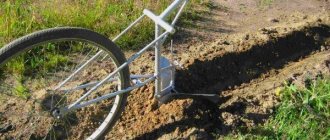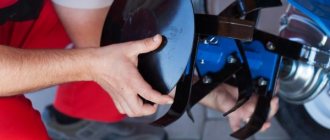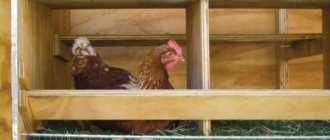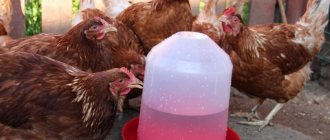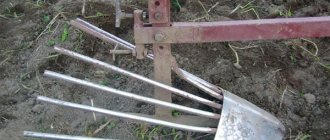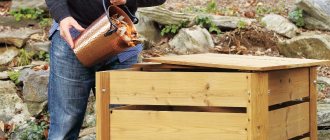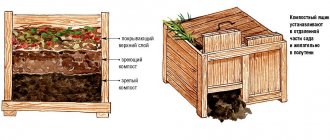Potatoes take second place in terms of popularity of cultivated crops. If you are engaged in growing potatoes, then you will need a walk-behind tractor with the appropriate attachments on your farm. Below we will describe why you need to hill up potatoes and how to make a disk hiller for a walk-behind tractor with your own hands, which will save you time and money.
Potatoes are a fairly tenacious plant and have a fairly high germination rate. It is on the cultivation and hilling of potato beds that the production of a high yield depends. Hilling is one of the most effective and useful agronomic technologies used when growing potatoes.
During hilling, oxygen saturation of the soil occurs, i.e. an aeration process occurs, which leads to an increase in the growth and number of tubers of the bush. Thanks to this, high potato yields are achieved.
Since in modern conditions potatoes are grown on large agricultural areas, this cultivation method without the use of mechanisms is simply impossible. Nowadays, you can’t do without a hiller even in the garden beds of summer residents.
On large cooperative or farm farms, the work of hilling potatoes is carried out by tractors. Summer residents just work with a shovel. This becomes physically unbearable if the potato planting exceeds one hectare. In this case, they resort to the help of small-scale mechanization.
Choosing a prototype
Hilling in general is a type of soil cultivation and is most often carried out with a conventional cultivator with replaceable working parts. The exception is hilling potatoes. In order for potatoes to form more large nutritious tubers, their rows are made wide (0.5-0.6 m), and the bushes are hilled high. Therefore, a potato hiller is a specialized mounted tool. Another specific case is the hilling of crops grown in narrow beds. Specialized cultivators for narrow rows exist, but in private household plots you can almost always get by with a regular cultivator with minor modifications, see for example. selection of videos:
Active or passive?
In large agricultural machinery, they often work with active hillers, the working parts of which are driven into rotation by the power take-off shaft of the traction unit. Walk-behind tractors and mini-tractors for private household plots and small farms are on sale, but in practice it turns out that an active hiller for them increases the productivity and quality of work slightly, but its cost and fuel consumption increase significantly, and the life of the engine is exhausted faster.
The reason is the engine. There are no mini-potatoes or tomatoes - we need edible ones. A mini-hiller should turn over soil per meter of row as much as a large one; the same amount of energy is needed for this. Taking 10 kW for a 5-hull hiller from a 100 kW diesel engine is not a problem, but giving 2 kW to a single-hull 6-10 kW engine will be at the limit of possibilities.
There is one more significant circumstance. Tractor diesel engines have a special design, although this is only noticeable to an engine specialist. Their liter power is small, but the engines themselves are very responsive, with a soft external characteristic, so the power output to the mounted unit has little effect on the specific fuel consumption in g/kW*h. It is difficult to install the same motor on a walk-behind tractor because the required performance characteristics are obtained only with a sufficiently large displacement of the engine. But even if this obstacle can be overcome, the motor will still turn out to be too expensive, heavy and bulky.
Large agricultural farms consume tons of fuel; Private household plots and small farms - in liters. But even here the engine of the walk-behind tractor must maintain a uniform traction force, adapting itself to the heterogeneity of the soil, because Processing errors are unacceptable in any case. Therefore, mini-agricultural machinery is equipped with engines, carburetor or with fuel injection, which are obviously power-hungry and designed for the speed of movement of the unit, approx. equal to walking speed. In this way, it is possible to minimize the costs of mechanization as a whole, but the external characteristics of the engine necessary for “painless” power take-off are no longer obtained: the engine is strained, burning an excessive amount of fuel and itself. Therefore, further we will limit ourselves to considering only passive hillers (without transmitting power directly to the working element), which load the source of traction force as little as possible.
How to set up a hiller of any design for work
Any mounted or trailed tillage equipment requires adaptation. Before you start working on the field, you need to make sure that everything is installed correctly, secured and adjusted. A trial area is selected and a test run is made. At this moment, you should listen to the technique, check the stroke profile, the distance between the grips. It is necessary to set the angles of attack on the disks, and the depth on the sheets.
It is important to select a processing speed that matches the power of the mechanism and the quality of field processing.
Motor or yourself?
Hilling can be carried out in half a row (top right in the figure at the beginning), when each bed is wrapped with earth in 2 passes, and immediately in a row (bottom left in the same place). Hilling in 2 passes in half a row is useful only for individual crops grown on a thin fertile layer under conditions of insufficient moisture: the depression on the crest of the dump prism serves as a moisture trap. Effective hilling of potatoes is carried out only immediately in a row.
Manual hilling by one worker is only possible in half a row on light, loose, poorly moistened soils, up to a width of 30-35 cm. Already for hilling potatoes on ordinary garden soil without mechanical traction, at least two are needed (item 1 in the figure below ): the front one creates the actual traction, and the rear one maintains the furrow and the depth of cultivation. A great exercise for feminists who want to prove themselves no worse than vile male harassers. But liberal-tolerant ladies prefer public events, online or in kind. Maybe because there is no useful work to be done there? And for something useless you can bargain for more payment, because... 100% reliable criteria for assessing unproductive work are impossible in principle. But let's get back to the topic.
Possibility of manual and mechanized hilling depending on the source of traction
Having a walk-behind tractor with a power of 0.5-1 kW at your disposal will make it possible to hill potatoes in a row, pos. 2 in Fig. Motoblock Neva, etc. will pull a 2-body hiller for a working width of up to 0.8 m, pos. 3, according to the pattern 0.5 row + 1 row + 0.5 row. On any mini-tractor you can attach a 3-body hiller of the same type (item 4), for processing 0.5 + 1 + 1 + 0.5, or a 2-body hiller for processing 1 + 1. Labor productivity increases, per 1 pass, 2-3 times compared to hilling in a row, but the cost of purchasing special equipment increases significantly. Therefore, further we will focus on how to make a hiller for a walk-behind tractor with your own hands, with the possibility of using it “by gravity”, and how to make a manual hiller for small areas, approx. up to 20 acres.
Note: although mounted implements for mini-tractors are generally not the topic of this article (mini special equipment is purchased by competent, already prosperous owners), but if you suddenly got a tractor, below we give a video on how to make a 3-row hiller for a mini-tractor yourself. tractors:
And about the results of his tests:
Disc or ploughshare?
In large-scale agricultural technology, at least 10 types of hillers are used. There are hundreds of patents for this type of mounted implements for cultivating land, and more are being added. But, taking into account the capabilities of home technologies and the requirement to work also on human muscular traction, the choice of prototype turns out to be small: it is a hiller or a general-purpose plow, or a disk for potatoes. For more information on both, see below, but for now let’s see in what conditions which one is better suited. The most important of them is the granulometric composition and physical properties of the soil. If your plot is on loose, non-sticky sandy or sandy loam soil (which, as you know, is best for potatoes), then you can, without further ado, build a manual mini-hiller for light soils, which you can work with alone, see for example. video:
or a manual hiller for light soils, which may have to be pulled by two people:
In all other cases, you will have to take into account the features of weapons of pre-selected types. For a plow hiller they are:
- The required traction force depends relatively weakly on the type of soil - two moderately developed people pull a single-body plow hiller with a body of type 2 (see below) over medium-moistened black soil, but it is quite large - you cannot pull this tool alone.
- The second worker driving the furrow must be quite experienced, otherwise the implement’s share may “dive” and get stuck in the ground or move to the side and cause a blemish.
- The plow hiller is multifunctional, because You can install a variety of working parts on its frame, see fig..
Replaceable working parts of the plow hiller
- The maximum grip of one body (share) does not exceed 400-450 mm.
- A plow hiller is of little use for hilling potatoes on light, loose soils—the raised soil crumbles. The blade prism is obtained with a height of less than 250 mm and with a hollow along the ridge, while a blade for potatoes is needed with a height of 300-350 mm and with a sharp ridge.
- High hilling in 2 half-rows (2 passes along each row spacing) is impossible - the ploughshare tears the roots of the plants.
- Having stumbled upon a stone, a thick root, etc., the plow hiller clings to it and gets stuck.
- When traction from an agricultural winch driven by an internal combustion engine over heterogeneous soil, processing flaws are inevitable.
- Technologically, the plow hiller can be completed entirely at home.
The disc hiller has a mark. peculiarities:
- The worker's qualification requirements are minimal: a correctly configured disk hiller (see below) automatically maintains the specified processing parameters.
- On light loose soils, the traction force required is less than for a plow.
- On medium and heavier soils the situation is opposite.
- On silty, heavy alluvial, etc. The disc hiller will not last on sticky soil and neither will the tractor - the engine will stall, the hitch will break or the implement will break.
- On soils that are optimal for potatoes, high hilling immediately in a full row with a sharp prism ridge is possible manually.
- The working width of a single-row disc hiller is up to 630-650 mm.
- High hilling in 2 half-rows is possible: discs running close to the root ball either roll over the roots or damage them imperceptibly for the plants.
- Having encountered an obstacle, the working parts roll over it. A small mistake is possible, but there is no forced interruption in work.
- When pulled by a winch, with an internal combustion engine or electric, it works just as well as when pulled directly.
- For manufacturing, you need purchased or custom-turned components, see below.
Finally, you need to take into account the fact that potatoes are an excellent insurance crop for any type of farm. Potatoes cannot be called a record holder in terms of profitability, but the demand for “second bread” is stable, and the shelf life of potato tubers makes it possible to sell the crop with the highest possible profit. Therefore, a significant share of the total area is allocated for potatoes in complex agricultural enterprises. Which one exactly is a matter of economics in relation to specific local conditions, but first of all it makes sense to make a disk hiller. The exception is the case if your area on the ground is above average gravity, and you have not yet acquired mechanical traction.
Tips for using equipment
After assembling the equipment yourself, it is necessary to carry out trial work with it on site. Its high-quality work depends on many factors: soil conditions, weather conditions, correct adjustment and sharpening of working elements and many other indicators.
All settings of a self-made device are carried out experimentally. To do this, it is advisable to first walk along a regular area of soil and adjust the optimal value of the angles and depth of penetration of the working surfaces of the hiller into the soil.
And equally important is determining the optimal operating speed of the unit. A correctly chosen pace of work has a positive effect on the quality of hilling, because at high speed the device will mainly scatter the soil in different directions, while worsening the process of furrow formation.
In our country, potatoes are considered the “second bread”, so with the beginning of the new spring season, many summer residents strive to plant this useful product on their plot. However, the process of obtaining a good harvest depends largely not only on planting, but also on further care (weeding, hilling) for this root crop.
Handling potatoes by hand is considered labor-intensive and time-consuming work. Therefore, the use of a walk-behind tractor with special mounted equipment is becoming increasingly popular among gardeners.
You can make attachments that are in no way inferior to industrial analogues yourself, with the help of minor material investments.
After completing the self-assembly of the hiller, the most important thing is to test it in the garden. Successful production does not yet guarantee high-quality work, because it depends on a combination of many factors - weather conditions, soil conditions, correct sharpening of the hiller elements, etc.
Before you start hilling, you need to walk through a regular piece of land. During the work, you will feel the correct operation of the hiller and will be able to adjust the optimal depths and angles of entry into the soil.
The second important point is the speed with which you will carry out the hilling process. A correctly selected pace of work can be no less useful in work than the presence of a hiller itself, because at high speeds the unit will simply scatter the earth in different directions without hilling.
Read more: Tabu preparation for processing seed potatoes – Sam-Village
Disk
The device of a disk hiller for potatoes is shown in Fig. below; its working parts rotate while moving under the influence of friction with the ground. However, if manufactured independently for a small private household, this unit can be significantly simplified by setting the vertical angle of inclination (in motorist’s terms – disc camber) fixed at 30 degrees with an angle of attack (negative toe) of 0 degrees, or leaving the discs vertical. In the first case, when adjusting the hiller to the desired angle of attack, the tilt of the discs will also change slightly, but when walking at walking speed this is not significant and is even convenient: the adjustment of the implement is done by just turning the discs.
Disc hiller device for potatoes
The point here is processing speed. The maximum possible speed, which does not gradually kill soil fertility, is theoretically 20-26 km/h. Accelerating the movement of the implement provides double fuel savings: by optimizing the operating mode of the internal combustion engine of the traction unit and reducing the time for processing a field of a given area. Considering that, according to the most optimistic forecasts, there is only 50-60 years of oil left on Earth suitable for diesel fuel, and agricultural machinery consumes up to 20% of the heavy motor fuels produced in the world, this is a matter of vital importance, which teams of highly qualified specialists are struggling with.
Note: light, low-sulfur shale oil is suitable for gasoline for passenger cars (which are already beginning to be replaced by electric vehicles), but you cannot get diesel fuel, jet fuel and fuel oil for marine power plants from it. Almost all known reserves of heavy oils are concentrated (in descending order) in Saudi Arabia, Russia and Iran; In the USA and Venezuela, dark oil deposits are almost depleted. Moreover, their magnitude in the Russian Federation is not precisely known - Russian experts, when asked directly, dismiss them with general remarks that, they say, many potentially oil-bearing areas have not yet been properly explored. Why they remain silent is quite understandable; this is information of the greatest strategic importance, greater than nuclear-laser-stealth-hypersonic secrets all together.
The “real” disc cultivator shown in Fig. higher, it is adjusted to the maximum possible speed of movement on a given soil. But in private household plots or on a small farm, in general, it doesn’t matter; hilling will take, say, 2 or 2.5 liters of low-octane gasoline and the processing will take 1 hour 30 or 40 minutes, but making a hiller will be much easier.
Drawings of a disk hiller for potatoes designed for mechanical and manual traction are shown in the figure:
Drawings of a disk hiller for potatoes for a walk-behind tractor and manual traction
This is an old, well-tested Soviet amateur design, fragments of which, scattered throughout the Russian Internet, are brought together here. Its distinctive feature is the presence of scrapers that remove adhering soil from the disks. During manual processing, this greatly reduces traction force, and during mechanized processing, fuel consumption. layout by item in Fig. is this:
- General view, marking of adjustment holes on the rake (emphasis on the first “e”), scraper, straight bracket (for an inclination of the disks of 0 degrees on ordinary garden soil;
- Disk sizes and disk configuration schemes (see also below);
- Angled disc bracket for working on sand and sandy loam;
- Rake dimensions.
At pos. Figure 2a shows the setting of the discs for hilling in one full row (see bottom left in the figure above) with traction predominantly. from a walk-behind tractor or winch. At pos. 2b – setting up primary drives. for manual hilling in 2 half-rows per pass, top right in Fig. at first. For more information about setting up a disk hiller, see the video.
Where needs improvement
The weak points of the described design today are:
- the discs themselves - they must be made of tough carbon steel;
- scraper - the material is the same, but it cannot be bent at home: it will undergo thermal tempering, and the scraper will bend itself and not clean;
- disc hub – works in the most difficult conditions.
Disk
The authors of the original design recommended taking discs and scrapers from agricultural machinery. It was easy for them to give such advice - then both were lying under their feet on any collective farm/state farm yard. Alas, those times are not now. Although, of course, not alas - we all experienced the hard way what happened at that time. Now, of course, buying discs for a hiller is not a problem. Problems appear later - with the quality of the material and the hub, see below. The price is the same - a obviously high-quality disc for a hiller for a walk-behind tractor costs half the price of a new mounted unit, or even more. So you need to find ways to make a good, durable disc for the hiller with your own hands.
The profile of the disk is simple: it is a spherical segment. Its deflection (distance from the base to the pole) for working at walking speed should be approx. 6% of diameter. You can do twice as much, then on light loose soils the blade prism will form better, but the traction force will increase.
The profile of a homemade disk for a hiller and its dimensions are shown in the figure:
Dimensions and profile of the disc for the hiller
Material – tough carbon steel no worse than St44. Disc thickness (not to be confused with the deflection arrow) 2-4 mm; the better the steel, the thinner the disk can be and the easier it will be to pull the hiller (or the less gasoline the walk-behind tractor engine will consume). For the same purpose, the cutting wedge is sharpened from the inside by 3-5 degrees; this can be done with a cylindrical abrasive roller inserted into an electric drill.
Where can I get it?
Yes, this steel is no worse than St44. The bottoms of household gas cylinders and the tops of boilers are not suitable. They are viscous, but low-carbon so that they can withstand pressure (have a fairly high yield strength) without the danger of sudden destruction. Unfortunately, their material is not adapted to abrasive, alternating and shock loads: the discs will quickly become dull and will soon become completely dented.
The most suitable blanks for hiller disks are wheels from car wheels; this is exactly what is needed, and with a large margin. They are a bit thick, however, but this will increase the traction force slightly. How to make disk shares for a hiller from auto disks, see video:
and the hiller itself with the following disks:
The disadvantage of hiller plowshares made from autodiscs is their not completely spherical profile. This further increases the traction force. If you have suitable sheet material, then how to make spherical discs for a hiller from it, see the video:
Scrapers
Old junk cars can also help out with scrapers: they can be made from pieces of springs; This is again what we need, with a large margin. Since it is impossible to bend spring steel in a home workshop without depriving it of its durability, toughness and elasticity, scrapers are simply cut out with a grinder. The discs are made according to the radius of curvature of the spring, because that of the disk itself is not critical, see above. You just need to take into account that the gap between the scraper and the disk is needed within 2-5 mm, depending on the stickiness (adhesiveness) of the soil.
Hub
Design of the disc share hub of a potato hiller
It is precisely because of the hub that it is strongly not recommended to buy disks for a hiller (especially on the Internet): most of them have one plain bearing and become loose during operation literally on the first bed. The disc share hub for the hiller should sit on a pair of nylon plain bearings (see figure on the right). “Balls”, bronze and even fluoroplastic are not suitable, it’s all in the ground and dust. Therefore, the hub bushing is tightly closed at the ends with threaded caps, and its internal groove is regularly filled with shahtol, etc. grease for mechanisms operating in harsh conditions. The bushing is pinned onto the shaft. Which, of course, makes it difficult to remove/install the disk, but any other fastening will not withstand its operating conditions.
Note: on garden soil, which is somewhat heavier (more dense) than usual, simple disk hillers without separate adjustment of the tilt of the disks are sometimes squeezed upward while moving. In such a case, you can make a hiller for a walk-behind tractor with a platform on which some kind of load is placed, see for example. video:
Making a lister plow
Such agricultural implements for motor vehicles are a classic non-adjustable device, used most often. To manufacture it, you need to sketch or use ready-made drawing documentation, according to which it will be easy and simple to carry out all the activities.
- We construct the base from an iron sheet 3 mm thick. It will encounter resistance from the soil, therefore, it must be extremely strong.
- The holder is made of a metal strip, 4 millimeters wide, the spare part must be hardened.
- The field board is made of steel 5 millimeters thick. It is hardened in several steps using a gas burner.
- The stand is made of iron 8 millimeters thick, since it will be the component that bears the entire load.
- The wings for the gun are made of iron 2 millimeters thick; they must be consistent with the parameters of the chosen design, since this is the only way they can be docked to the base.
- Then they bend a little and cook to the base.
Read more: Dwarf pears description of varieties for the Moscow region care features
If you need to set up a tiller, you need to fix the wings to the base using hinged joints. The rods for adjusting the angle are mounted in the tail of the base. You can also create a 2-row device, due to which the work rate will double. In this case, it is necessary to add traction mechanisms to the constructed structure, and make the fasteners movable, which will make it possible to adjust the size of the rows.
Pluzhny
The design of a 2-row plow hiller for a walk-behind tractor is shown in the figure:
Construction of a 2-row universal plow hiller
Gardeners often call the plow hiller eared because of its mouldboard wings. Its supporting frame is no different from that of a universal cultivator; Yes, in fact, this is a cultivator with replaceable working parts. Body Type 1 (furrower, tiller) is designed for furrowing (plowing furrows); Type 2 is actually for hilling. Type 1 wings are rigidly attached; the spread of Type 2 blades is adjustable. The Type 2 body is also equipped with a field board that sets the depth of the working body: less on heavy soils, more on light soils; The volume of the blade prism is adjusted in the same way, i.e. hilling height. The principle of operation of both bodies is the same: the coulter knife cuts the soil and transfers it to the ploughshare, which divides the cut layer in two. Only the operation of the wings and blades differs somewhat. The wings simply move the soil slightly to the sides and smooth the top of the blade prism. The dumps (no longer of soil, but of the hiller's ploughshare), on the contrary, form the smoothest possible prism with a sharp ridge.
It's all about the plowshare
There is no prompt adjustment of the plow hiller to the processing conditions. Instead, replaceable plowshares are placed on the frame carrier(s).
Peasant plow
The plow share (item 1 in the figure) is not adjustable for the working width: it is 20-25 cm. It is a direct successor to the old peasant plow (see figure on the right). It is easiest to pull a hiller with a plowshare along narrow rows on light or ordinary garden soil. In addition, the plow share is suitable for shallow plowing, weeding, and digging up potatoes - but not on light sandy soils, where potatoes “scatter” large, tasty tubers widely and deeply.
Replacement shares for plow hiller
A typical plow hiller is a lister, with lister blades of adjustable span, pos. 3 and 4 in Fig. higher. Lister in English is a page turner from to list (to flip through); just list without a preposition indicating that it is a verb (in Russian, a purely inflectional language, there are no such things) it is a list and a few more additional meanings. The working width of the lister hiller is the maximum possible for this type of implement, up to 450 mm. How to make a simple single-row lister hiller with your own hands, suitable for hand-pulling, see for example. video:
Potatoes, as mentioned above, are planted in wide rows. It is very difficult to pull a lister hiller with such a wide mouldboard, and then it will not form the required mouldboard prism. Therefore, potatoes are hilled with a chisel hiller (item 5). In general agricultural terms, a chisel is a knife that performs preliminary or additional tillage of the soil. There is some analogy here with tearing fabric: it is difficult to tear a whole piece of width, because... its edges are coated in a special way specifically against this; Likewise, the soil is cemented by the roots of plants. But if you cut the edge of the fabric just a little, the child will tear it “with a whistle”; This pioneering cut into the soil is what makes a chisel. For better loosening of the soil and the formation of a high pointed prism, the plowshares of chiser hillers are often made split (see the figure below): the springy “feathers” of the wings (which are also called chisers), under the impact of lumps of soil, further loosen it and are further discarded. The advantage of chisel plow hillers for potatoes is that only the underground knife-arrow needs to be made from high-quality viscous carbon steel, and all other parts can be made from ordinary structural steel; complex profiling of the chisel, the ploughshare itself and the dumps is also not required.
Chisel hiller plowshare for potatoes
Do you need a profile?
The surface profile of the ploughshare determines the fuel consumption of the traction unit during plowing and hilling with a plow hiller. The role of energy saving in agricultural technology was discussed above, therefore entire scientific institutes are engaged in profiling the ploughshares of agricultural implements. The development of a new profile that provides savings of 2-3% compared to current consumption is considered a major achievement. But it is very difficult to make a “truly” profiled ploughshare with your own hands, and it is also said above why in private household plots and small agricultural farms, when processing on foot, fuel economy fades into the background. As for the traction force (this is the main thing for a manual hiller), then at the same speed, careful profiling of the ploughshare reduces it slightly; almost imperceptible. But a foundry with a cupola furnace and a stamping press with a capacity of 2-5 thousand tons or more do not exist in a home workshop, and bending and knocking out the most ordinary structural steel with a thickness of 2 mm is exhausting work. Therefore, it makes complete sense to make a plow hiller with your own hands with a ploughshare of a simplified profile.
Design examples
In the Russian zone for cultivating open ground for potatoes from homemade plow hillers, a lister hiller with a simplified ploughshare(s) and a chisel hiller are applicable. Which one to do is determined by the nature of the soil on your site. We do not touch chernozems and other highly productive soils: they are not allocated for dachas, private plots and small farms; If you have such luck, then you need to work as an active hiller. On the gray, brown and brown soils common in the Middle Zone and southern Siberia, potatoes do not produce record yields, but their rows can be narrowed to a limit of 50 cm - the roots of the bush will not spread far, and there will be no tangible benefit from very high hilling. A lister unit will be effective here.
But another version of potato luck is also possible. When the last great glacier melted, flows from it in the Valdai region merged with a river up to 200 km wide (!). It flowed into the sea somewhere between present-day Rostov-on-Don and Taganrog. For the first time, the existence of such a river was proven by alluvial deposits on the Ergeni Upland, and geologists called it the Ergen River, and the sediments remaining from it were called Ergeni. Ergeni are widespread in the European part of the Russian Federation. For example, in the Voronezh region. literally across the road from rich, more than meter-high black soils, a stretch of thin grayish soil on loose sandy loam or sand may begin, God knows where in width - this is Ergen, stretching from here to the Dnieper; Chernigov and Sumy regions. with their famous potatoes (and the unbearably disgusting moonshine made from them) are almost entirely located on Ergeni. Potatoes grow well on spring trees, but they need to be planted in wide rows and hilled with a chisel or disc hiller.
Listerny
Drawings of a simplified profile ploughshare for a lister hiller drawn from a walk-behind tractor are shown in the figure:
There is not a single double-curvature part in the product, and only the knife is made from high-quality steel (detail 5 in the figure). The ploughshare itself is a piece of steel angle from 40x40x2. The blades are attached to it on card loops. Curvilinear blades (item 2 in Fig.) made of sheet steel from 2 mm can be further simplified by making them faceted, as shown at the top left in Fig. In this case, no greater traction force will be required, and the quality of processing of ordinary garden soil will not noticeably deteriorate.
Chiselny
A general drawing of a plow hiller for potatoes on light loose soils with a chisel share is shown in the following. rice.:
Drawings of a plow hiller for potatoes with a chisel share
It can also be used to make the ploughshare itself; shown in Fig. There are enough sizes and sections for this. Only an arrow knife is made from strong, tough carbon steel (a piece of a spring, a part of a car disk, etc.); its cutting edge is ground to a simple wedge with a tip angle of approx. 20 degrees. The span of the dumps is up to 550 mm, they are made of sheet steel with a thickness of 2 mm. First you need to make a life-size model of the plowshare from packaging cardboard, etc. light sheet material, and accurately fit the wings to each other, maintaining the specified dimensions. The model is then disassembled and its parts are used as templates for cutting sheet metal. The cut blanks are bent until they coincide along the weld line and are welded using tacks. Next, the wings are carefully bent to the desired opening angle, complete symmetry, and the seam is finally welded.
Let's look at the features of each of them.
They have a fixed soil width and are used on very light motor cultivators with a power of up to 4 horsepower. Capable of cultivating beds measuring 25-30 centimeters in width, they are equipped with two side wings and a thin stand. The stand protects the equipment from overloads and mechanical damage.
This tool can only be used on dry soils, since adhered soil will interfere with the operation of moving structural elements. There are lister devices with adjustable tillage width. They are installed on motorcycles with higher power – from 4 horsepower. Such units can be safely used on wet soil.
Propeller
The principle of operation is the activity of the propeller parts. Under their influence, the soil is first dug up and weeds are removed, and only then the beds are loosened. These modifications are mainly practiced for motor cultivators with front-wheel drive and two speeds. This is due to the fact that at second speed the power increases to 180 rpm.
Double (2-row)
It cuts two furrows before planting crops, and is also used for hilling and loosening the soil. Includes a frame on which 2 hillers are fixed. When cultivating land, it significantly saves time, since it has two working elements. Mounted on a walk-behind tractor using a hitch. Due to the fact that such a device requires a lot of resistance to operate, it is used in conjunction with lugs.
Read more: Spraying grapes in spring - treatment with copper sulfate
Rotary active
Instead of wheels, this implement is equipped with rotors with screw-type teeth. Demonstrates high performance when creating, loosening and hilling potatoes. Suitable for use with 3-speed units (two forward and one reverse). In the first gear, the implement hills up the plantings, and in the second gear it also removes the soil from the space between the rows of plantings.
Single row
The most common type. Suitable for use with light soil types. Cutting ditches is carried out after completion of the preparatory loosening of the soil using a cultivator.
Completely on its own
If you are just planning to buy a walk-behind tractor and need to hill up potatoes, a manual plow hiller with the possibility of converting it to mechanical traction will suit you. In this case, the flexible rope strap is replaced with a rigid rake, and the plow share with a wingspan of up to 25 cm (you can’t pull it anymore) with a lister or chisel.
Drawings of a manual hiller of this type are shown on the left in Fig. This is, in fact, a “semi-manual” unit: without modification it is suitable for traction from an agricultural winch. If its power is sufficient, you can immediately install a wider plowshare. When converting it to a walk-behind tractor, you can leave the wheel, but then two people will have to work: one drives the traction unit; the second is a hiller. This way, by the way, is more convenient: the work gets done faster, and the result is better.
Drawings of manual plow hillers.
If on your 4-12 acres the payback of the walk-behind tractor is not expected, then you can make (or purchase) a completely manual hiller, see on the right in the figure. Its feature is the rapid adjustment by lanyard 1 of both the size of the blade and the traction force in accordance with the properties of the soil. Basic dimensions are the same as before. case. The kink of the carrier is also the same, 5 degrees. Rake break approx. 80 degrees, and the bend of the front handles is selected according to the height and physique of the source of traction.
Note: doesn’t it seem paradoxical to you that in an era when people are mastering the quantum world and seriously discussing the possibilities of interstellar travel, implements for cultivating the land using... human muscular traction are actively offered on the agricultural machinery market and are selling well? The slave owners of Ancient Rome would have laughed until their bellies burst.
